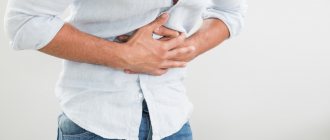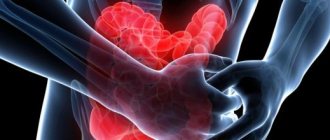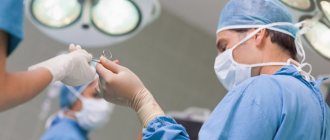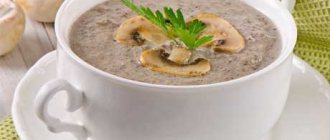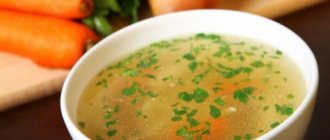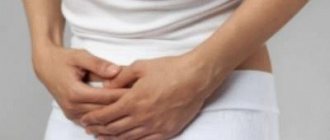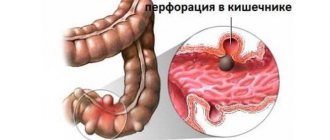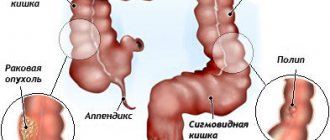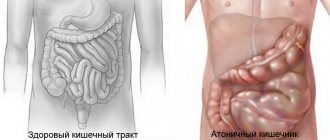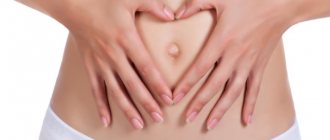In the 21st century, conservative methods of treating polyps are no longer used. Traditional medicine and drug treatment are a thing of the past due to the ineffectiveness of the methods. The only correct solution is surgical or endoscopic interventions, depending on the severity of the inflammation, the size of the formation, and the location.
Endoscopic surgery is performed without incisions on the body. The advantage of this method is the absence of significant blood loss, shorter recovery time after surgery, and the absence of scars from body incisions. The procedure is performed directly in the intestine using a proctoscope.
The classic operation includes general anesthesia, an incision in the abdominal cavity, and a longer rehabilitation period. The choice of method for removing polyps occurs after a mandatory biopsy.
Methods for removing growths in the intestines:
- Laser removal. The method is used for a single type of polyp on a stalk or base, with a size of up to two centimeters. The villous appearance is not cauterized by laser due to size. The laser is not used due to its ability to burn through the intestinal wall. The procedure lasts from a quarter to half an hour under local anesthesia. Laser excision is prescribed if the formation is localized at the anus up to 7 cm.
Postoperative complications
A common complication that awaits the patient after polyp removal is bleeding. Its duration lasts up to ten days. Bleeding is not profuse. If the abundance is high, there is a threat to human life - a repeat examination is prescribed.
The most dangerous consequence is perforation (rupture) of the intestinal wall. Rupture occurs after or during surgery. The solution to the problem is stitching.
To prevent further complications, see your doctor. The doctor will give the necessary recommendations on lifestyle and diet.
What are polyps and how are they removed?
Growths may appear on the intestinal mucosa. Round, oval, lumpy, thin stalked or flat. They are called polyps and are benign formations. Adenomatous, villous types have a high probability of malignancy, that is, degeneration into oncology. Other types of growths rarely become cancer, but can sometimes interfere with bowel function.
There are no conservative treatments for any type of polyp, so 90% of cases end in removal. This is usually done endoscopically during a colonoscopy:
- The patient is given an enema and local anesthetics are administered.
- An optical device is brought into the intestine through the anus to the formation, which allows you to see the surgical field.
- Then the removal tool is passed through a special channel of the endoscope. This could be a loop through which current is passed.
- It is thrown onto the growth, tightened, and under electrical influence the polyp is annealed from the intestinal wall.
- The cut-off fragment must be pulled out and then sent for histological examination.
- The wound remains sealed or it is sealed additionally, pressing the loop to this place.
- Sometimes a laser or special forceps are used to remove a polyp.
Diet after surgery
The operation does not end with the operation; the recovery period continues by following a certain diet. You should start eating according to the rules of the diet immediately after the end of the operation; the diet along with the diet is divided into three parts.
The first part is difficult. Lasts three days. The first postoperative day will have to fast. On the second day you are allowed to drink water, in the afternoon - broth. After another half a day has passed, the diet includes jelly and rice water. A long process is inevitable. When a person digests food, enzymes and bile are produced. If this process is allowed to happen, it will negatively affect the postoperative condition of the intestines. The applied seams tend to come apart.
The second stage lasts from the fourth to the fourteenth day. Allows the consumption of liquid porridges and soups. If the level of gas formation is high, these products are removed from the menu. The goal of this stage is to increase the load on the intestines.
Third stage. The approximate time of observance is from the fourteenth day to four months. Meals should consist of light broths, cereals, low-fat foods, light desserts without fatty creams. Coarse fiber products are strictly prohibited.
The body’s task after surgery is to replenish the body with missing elements. For the immune system to function properly, immunoglobulin, a protein, is required. It is replenished with the help of dairy products, meat broths, boiled meat (chicken breast).
Prohibited Products
In order not to aggravate the situation, the patient refuses drinks: coffee, alcoholic drinks, fresh milk. In meat, give preference to low-fat varieties. You will have to give up smoked sausage, fatty meat, and delicacies. The same applies to products that cause excessive gas formation: peas, other legumes, white cabbage, yeast baked goods, baked goods, white bread. Spicy and salty foods are excluded from the diet. If you have polyps, fried foods, pickled vegetables, pickled and salted fish are prohibited. Limit canned fish, mushrooms, and sweets with rich cream.
Causes of polyps
The causes of its occurrence are currently unknown, since the etiology of polyposis has not been sufficiently studied. Doctors only speculate about the possible mechanism of these formations and the origin of the tumor in the digestive system:
- Chronic inflammation in the intestinal walls.
- General weakening of population health against the backdrop of an unfavorable environmental situation.
- Pathological condition of the digestive organs and blood vessels.
- Genetic predisposition.
- Food allergic reactions and gluten sensitivity.
- Poor nutrition (exhaustive diets, fatty meats, dry meat, fast food, as well as foods containing large amounts of carcinogens and preservatives).
- Excessive consumption of alcoholic beverages.
- Vascular diseases.
- A sedentary lifestyle or, conversely, heavy physical work.
Prevention of disease relapse
Prevention of the disease consists of reducing the level of irritants that cause symptoms of the disease. The causes of rectal polyps are not clear. To prevent the disease, an integrated approach is chosen, including a certain diet and an active lifestyle.
Separate nutrition for polyps is an important component. The recommendation helps to exclude products that have a negative effect on the gastrointestinal tract, due to which polyps appear. A proper approach to food will save your health and free you from surgery.
A lot depends on your lifestyle. A sedentary lifestyle leads to blood stagnation - the cause of the development of polyps. An active lifestyle and nutrition are designed to help get rid of unpleasant symptoms.
The disease is influenced by heredity - the factor cannot be corrected. The only way out of the situation is a vigilant attitude towards health. By neglecting themselves, people trigger illnesses, taking them to extremes. Timely consultation with a doctor and treatment will help get rid of severe consequences.
Surgery for polyps is the only way out. If it occurs, advice on nutrition and daily routine remain relevant. A constant regimen and proper diet do not lead to negative consequences.
Surveys
Before choosing a polyp removal method, the proctologist sends the patient for additional examinations. This is necessary to identify contraindications. Depending on the equipment, it will be possible to determine the size, exact location, quantity, and features of the growth.
Diagram of the location of the polyp in the intestine
Typically, to prepare, the doctor begins with a digital examination of the rectum. Checking is rarely enough; the doctor sends the patient for an endoscopic examination of the rectum.
A procedure is often performed to eliminate the possibility of a benign growth developing into a more dangerous malignant one.
If the picture is not complete and clear enough, an x-ray examination is performed with the introduction of a radiopaque contrast agent into the intestine. Carrying out such a survey is rather an exception to the rule. But endoscopic examination is prescribed for everyone.
Differential diagnosis is carried out. Needed to identify differences between polyps with similar external pathologies. They often exist at short distances from each other, making treatment more difficult.
Questions and answers on: removal of polyps in the intestines
I am 42 years old. My name is Diana.
Over the course of 7 years, there were two unsuccessful pregnancies. The first miscarriage was at 6 weeks without medical care. interventions.
After 3 years, a 3mm polyp was discovered.
Last year (2010) we had a hysteroscopy to remove a polyp. Everything went well (they didn’t risk doing a laparoscopy for me because of the pubescence of the organs). my weight is 45 kg (height 1.60)
Pregnancy occurred in the same month, immediately after hysieroscopy.
But in the 3rd week there was a miscarriage.
All tests were completed within a year. (for all viruses and hormones) Anti-sperm bodies Anti Sperm Ab (ASA) 265.0 were detected in the blood, with the norm Elvira Dmitrievna Klochko:
Transanal removal of the rectal polyp is performed in all situations where pathology occurs, since conservative therapy is ineffective in cases of neoplasms. The choice of method is directly related to the size of the polyps, their shape, and location in the anus. Attention is also paid to the number of formations. If he is alone, then they resort to minimally invasive intervention, which is carried out with an endoscope.
IT IS IMPORTANT TO KNOW! Even “advanced” hemorrhoids can be cured at home, without surgery or hospitals. Just remember to apply 3 times a day read more.
Other non-traditional treatments
Practicing medical professionals are very wary of using folk remedies in the treatment of intestinal polyps. It is possible to be cured at home only in the early stages of the disease. Therefore, a preliminary examination of the individual by a doctor is necessary. In the absence of contraindications, folk remedies will help activate the body’s defenses to fight the disease:
- Viburnum - a valuable chemical composition prevents the transformation of polyps into malignant tumors, and with long-term use promotes their resorption. They eat both fresh berries, chew them slowly, and dried ones - brew them and drink them instead of tea. If desired, you can add honey.
- From thirty spruce needles and fifteen grams of hops, an aromatic decoction is prepared for one serving. Initially, pour a glass of boiling water over the needles, and after thirty minutes add hops, bring to a boil and remove from the stove. Drink three times a day, one third part. Cool and filter before use. After three days they take a six-day break. Three courses of treatment are recommended.
- Golden Us - thirty grams of medicinal plant material is poured with half a liter of vodka. For infusion, which is carried out for two weeks, use a dark place. Take one dessert spoon daily. After a month they take a break for ten days. Next, the course of treatment for intestinal polyps is repeated.
Reviews from medical professionals contain warnings that are especially relevant for those individuals who use folk recipes and advice from healers. They say that the ability of polyps to degenerate into cancer is very high, especially in the colon. Therefore, you should not delay your visit to the doctor, hoping that herbs will cure the tumors.
Why do polyps appear?
Doctors do not give an exact answer to the question about the appearance of these growths. However, it has been proven that they can form due to chronic inflammatory diseases that affect the large intestine. At risk are patients who suffer from the following pathologies:
Did you know? Mikhail Sergeevich: “I can recommend only one remedy for the quick treatment of hemorrhoids” read more.
- ulcerative colitis;
- dysentery;
- presence of hemorrhoids;
- enteritis.
Return to contents
Types of surgical interventions
Electrocoagulation
The manipulation is carried out by applying electric current to the neoplasm. After the surgeon has burned it out, the polyp is captured in a loop and removed from the intestine. The following indications for electrocoagulation are noted:
PAY ATTENTION! This home remedy will help ANYONE who is tired of suffering every time they go to the toilet. It works quickly and naturally, without injections or surgeries! what kind of remedy >>
- localization of the growth up to 30 cm from the anal ring;
- benign nature of the neoplasm;
- small sizes;
- single polyp.
Before electrocoagulation, you will need to cleanse the intestines and not eat in the morning before the procedure. First, anesthesia is performed, after which a proctoscope is inserted into the rectal area. A loop is then placed in the tube to capture the formation, and current is passed through the loop. After this, the burned growth is removed from the anal ring.
Transanal polyp removal
This type of surgical intervention is resorted to when the growth is located no further than 10 cm from the anus. Preparing for the removal of polyps involves cleansing the intestines with an enema. Then local anesthesia is given. Using forceps, the surgeon pulls back the stalk of the tumor and cuts off its head with a scalpel. A suture is placed on top. In cases of a flat polyp, its base is cut out and the wound is sutured on top. The affected area is treated with an antiseptic solution. A tampon soaked in Vishnevsky ointment is inserted into the anal ring. It is removed the next day.
Transanal endoscopic microsurgery
During the manipulation, a proctoscope is used, which is inserted into the anus. A device is attached to the device that allows you to illuminate the walls of the rectum and inflate it using carbon dioxide. The tumor is removed using endoscopic instruments. Thanks to this type of surgery, it is possible to eliminate the risk of bleeding, since coagulation is used at the end of the procedure. Transanal endoscopic microsurgery is used to get rid of growths of any location.
Endoscopic polypectomy (electroexcision)
Removal of polyps in the rectum using this method involves excision of them with electric loops. First, a rectoscope is inserted, where an electric loop is placed. When it is placed on a tumor, an electric current is passed through it, due to which it heats up and produces a thermal burn. Because of it, the cells die and the polyp is removed. It is then removed from the rectum using special instruments. Endoscopic polypectomy avoids bleeding.
Resection of polyps
They resort to this type of surgical intervention when a patient is diagnosed with polyposis, which is multiple neoplasms in the rectum. In addition, resection can also be used for malignant polyps. In this case, they are completely excised. If the cancer process penetrates into adjacent tissues, the surgeon completely excises the rectum along with the growths. When the tumor has metastasized, the lymph nodes are also removed. The surgery is performed under general anesthesia.
Indications for surgery
Formations of this type are subject to mandatory removal.
Polyps in the rectum must be removed. Drug therapy in such a situation does not bring any effect. If a larger polyp is detected in the patient, then electrocoagulation is used. When an adenomatous or villous neoplasm is diagnosed, transanal excision is used. If malignancy of the formation occurs, then resection is used, during which the polyp is removed along with adjacent healthy tissue.
Postoperative period
Diet food
First stage
Its duration is 3 days after surgery. On the first day, the patient is prohibited from consuming any food or liquids. Nutrients are administered intravenously. After a day, doctors allow you to drink a small amount of water. On day 3 you are allowed to eat vegetable and weak meat broth and jelly.
2 dietary stage
If the patient feels well after removal of the polyp for 3 days, doctors allow the menu to be expanded. It is acceptable to eat liquid porridges, pureed lean meats, boiled eggs, and cereals. When a new food is introduced, it is important to monitor the patient's condition. If pain, bloating, or attacks of nausea appear after eating, then the food should be removed from the diet for a while. Stage 2 of dietary nutrition lasts until the person is discharged from the hospital.
The final period of the diet
For 4 months, the patient will need to adhere to a gentle diet. Regardless of the method used to remove polyps from the rectum, it is important for all patients to follow the same nutritional principles:
- Eat small meals at least 5 times a day.
- Eat food at the same time every day.
- Avoid fatty, fried, sour, spicy and salty foods.
- Drink at least 3 liters of liquid per day.
- Add enough protein foods to the menu.
- Do not consume excessively hard foods.
Return to contents
Doing exercises
The postoperative period involves initial bed rest. Its duration depends on the type of surgical intervention and the subsequent condition of the patient. To prevent blood stagnation and other consequences, rehabilitation includes a set of exercises that the patient needs to do even while lying in bed. Most often you need to perform the following gymnastics:
- rotation of feet and hands;
- flexion and extension of the lower and upper limbs;
- spreading your legs.
Walking should be part of healthy exercise.
When the patient is allowed to walk, gymnastics will include walking. In addition, after a certain time you will need to train the muscle tissue of the anus. This happens by alternately opening and closing the sphincter of the anal ring. Strengthening is done while inhaling, relaxation is done while exhaling. You will need to perform at least 10 exercises per day.
Diagnostics
Often abnormal nodes are detected by chance when examined for the presence of other diseases by a proctologist. To confirm the diagnosis, the following measures must be taken:
- Manual analysis - the technique makes it possible to assess the condition of the sphincter and rectum over a distance of 10 cm. With rectal palpation, a specialist can detect the presence of pathological growths and determine their number in this area.
- Colonoscopy is a method that allows you to examine the entire intestine. Thanks to the illumination, the location of pathological foci can be accurately detected, and the procedure also makes it possible to stop bleeding, take abnormal tissue for a biopsy, and remove the node during the diagnosis.
- Sigmoidoscopy - analysis is carried out using a flexible probe.
- Irrigoscopy - the study is characterized by distention of the intestine, then a contrast agent is injected. Several photographs are taken in which various tumors, cysts, and polyps can be detected.
- Computed tomography, magnetic resonance imaging - thanks to the scanner, all parts of the intestine are examined. The technique is not available to everyone because it is quite expensive.
Consequences after removal of polyps in the rectum
Mostly, removing polyps from the rectum does not cause consequences. However, in some patients, complications include bleeding after surgery, which results in anemia. It is characterized by dizziness, headaches, nausea and vomiting. In addition, intestinal obstruction or malignancy of the area of the intestinal mucosa from where the polyp was removed is sometimes noted. If a patient experiences a deterioration in health and unusual adverse reactions during the postoperative period, it is important to contact a medical facility.
How to recognize pathology?
Mostly, the formation of polyps does not make itself felt in any way; the pathological condition is diagnosed during a routine medical examination. Often, symptoms appear when the neoplasm is injured or undergoes an inflammatory process. In this case, patients complain of the following symptoms:
A sign of the presence of such a formation in the intestine may be increased stool frequency.
- frequent bowel movements, during which pain is observed;
- blood impurities in stool;
- bleeding due to injury to the formation;
- an increase in body temperature if accompanied by an inflammatory process.
Sometimes it feels like something is blocking the anus. This is due to the large size of the polyp when it blocks the lumen of the rectum.
Do you still think that getting rid of hemorrhoids is difficult?
Judging by the fact that you are now reading these lines, victory in the fight against hemorrhoids is not yet on your side.
Have you already thought about surgery? This is understandable, because you have only one internal body, and its proper functioning is the key to health and well-being. Blood on paper, constant thoughts of how to reduce swollen, painful lumps, insomnia, going to the toilet feels like hard labor. All these symptoms are familiar to you firsthand.
But perhaps it would be more correct to treat not the effect, but the cause? We recommend reading the story of Mikhail Sergeevich, how you can get rid of hemorrhoids without harming yourself. Read the article >>
